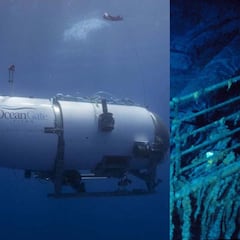Why can’t the remains of the Titanic be resurfaced?
The Titanic sank in 1912 and it took over seven decades to locate its remains. They will stay where they are until the ship is consumed and vanishes.

The Titanic was on its maiden voyage across the Atlantic Ocean in April 1912. The ship that had been touted as “unsinkable” set out from Southampton and was enroute to New York City when its hull was ripped open by an iceberg. It took around two hours and forty minutes for the massive ship to be claimed by the sea along with over 1,500 passengers.
It would take over seven decades to locate the wreckage of the ill-fated ship but attempts to locate and raise the Titanic began almost as soon as it had sunk. However, even those ideas to recover the remains of the sunken ship that weren’t totally bonkers ran into other problems.
Why can’t the remains of the Titanic be resurfaced?
One of the main reasons is that the Titanic is resting at some 12,500 feet below the surface of the North Atlantic, an incredibly difficult environment in which to operate both above and below. The challenging conditions and the size of the ship mean that any project would be extremely costly, something that stopped previous attempts.
First sighted on the 1994 expedition by the French Oceanographic Institute & the P.P. Shirshov Institute of Oceanology, a 1996 attempt to recover it failed when a cable snapped and "The Big Piece" plummeted back down 12,500 ft. It was successfully raised two years later. #Titanic pic.twitter.com/zl5TMaJv9F
— Save Titanic Memorial Lighthouse (@TitanicNewYork) October 5, 2022
Now it turns out that the Titanic will stay where it is, at least for now, as it is too fragile to be raised from the ocean floor. The acidic salt water, hostile environment and an iron-eating bacterium are consuming the hull of the ship. The latter appears to be getting more aggressive and will eventually reduce it to a huge pile of rusticle fragments. Also it should not be forgotten that it is technically a graveyard of the more than 1,500 souls that perished.
What methods have been proposed to raise the Titanic?
Several objects have been recovered from the remains of the Titanic, including a 15-ton section of the hull known as the “Big Piece” recovered in 1998. While plans have been dropped for resurfacing the two main sections, there were some interesting ideas floated for how the feat could be achieved.
Perhaps one of the plausible was using balloons which would be inflated under the wreckage to raise the Titanic to the surface. A 1980 film ‘Raise the Titanic’ based on a book by the same name portrays the feat being successfully accomplished.
Related stories
Besides the frailty of the hull these days, it would have required tremendous coordination to inflate the balloons at the right speed so that the hull would rise to the surface at the correct speed so that it wouldn’t disintegrate. Not to mention it would take a tremendous amount of helium.
One of the earliest ideas put forth in 1914 was to use electromagnets to encounter the remains and pull them to the surface. In the 1960s and 1970s some of the more hare-brained proposals included filling the ship with ping pong balls or glass spheres to pull the ship up from the depths. A couple other ways that were spitballed to make the wreck buoyant again was on the one hand filling it with 180,000 tons of Vaseline, which would solidify and bring the Titanic up in theory, and another freezing the water around the vessel, using liquid hydrogen, to achieve the same effect.


